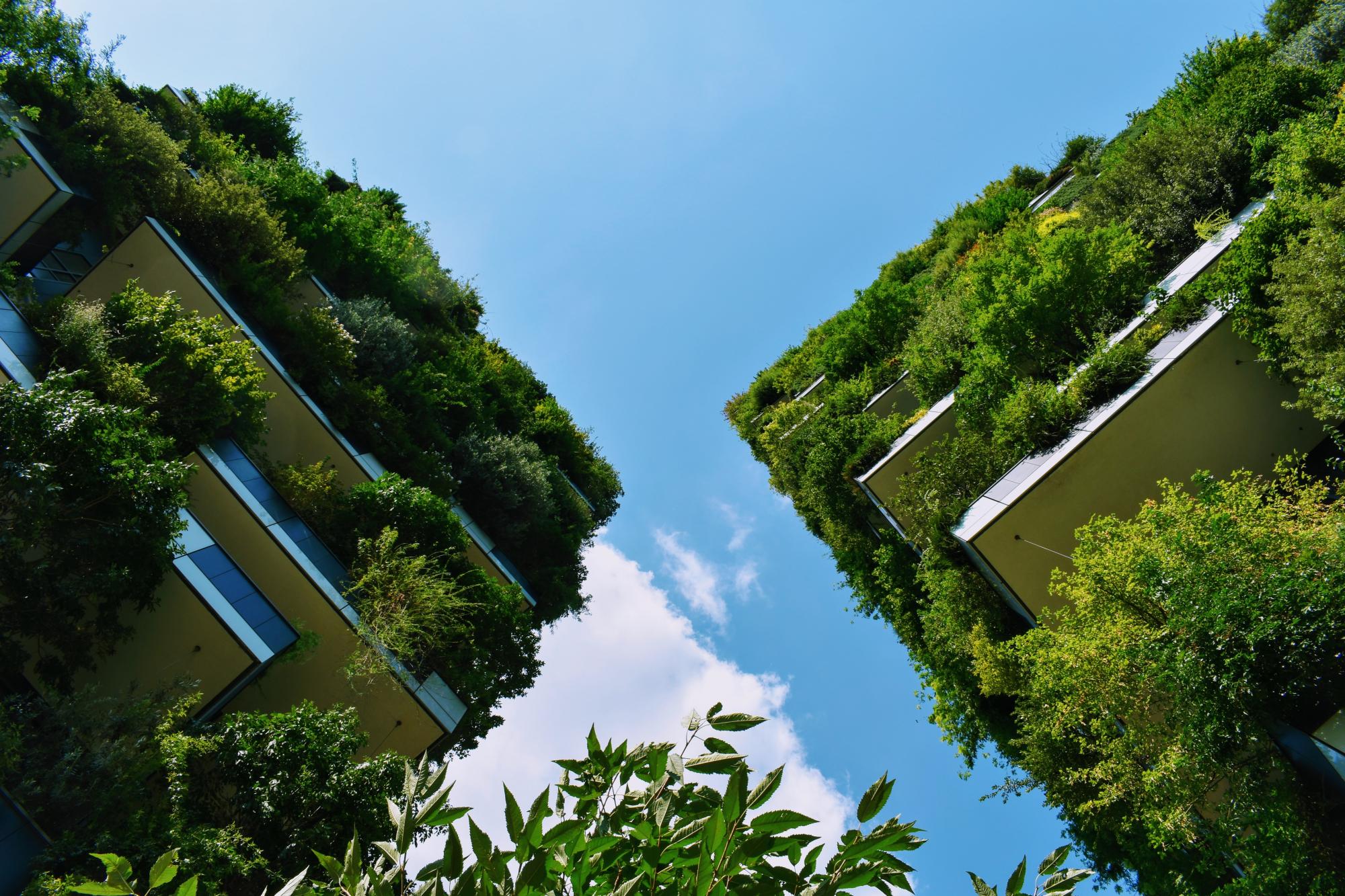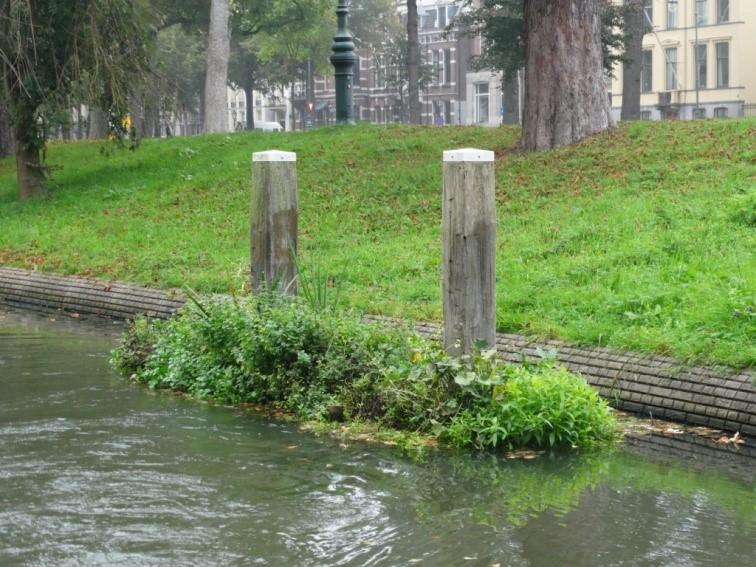Last updated: October 2021
The historical canal that was disconnected by a road in the 1970s is currently being restored by the municipality, creating a lively atmosphere allowing for water recreation, a boulevard and green spaces (ref. 1). A small element of this restoration is the addition of green elements by a citizen group, which entails improving ecological, aesthetic and historical quality of the canal by implementing eco-friendly riverbanks, green connecting zones and floating vegetation islands (ref. 3,9,11,12).
Overview
Nature-based solution
- Grey infrastructure featuring greens
- Blue infrastructure
- Riverbank/Lakeside greens
- Parks and urban forests
- Green corridors and green belts
- Rivers/streams/canals/estuaries
Key challenges
- Water management (SDG 6)
- Flood protection
- Improvements to water quality
- Green space, habitats and biodiversity (SDG 15)
- Habitat and biodiversity restoration
- Habitat and biodiversity conservation
- Green space creation and/or management
- Environmental quality
- Waste management
- Inclusive and effective governance (SDG 16)
- Effective management
- Cultural heritage and cultural diversity
- Protection of historic and cultural landscape/infrastructure
Focus
Creation of new green areas, Management and improved protection of rivers and other blue areas
Project objectives
The main goals were improving water quality, improving aesthetic and cultural/historical value and improving environmental quality within the canals of Utrecht (ref. 11)
Additional goals were:
Biodiversity: by providing habitat and breeding grounds for species and creating green corridors (ref. 4,10,12)
Improving local climate (temperature and air quality) (ref. 9)
Inclusive governance: the community group mobilizes volunteers for maintenance of the vegetation (ref. 3,12)
Implementation activities
Green corridors: connecting green zones between different parts along the canal (ref. 8)
Eco-friendly river banks with diverse vegetation, flower-rich embankments and exit points for animals (ref. 9,11,12)
Water plants and 'floating vegetation inslands' that improved water quality and provided habitat and breeding grounds (ref. 12)
Ecological art project by Birthe Leemeijer that was being created (ref. 12)
Mussel crates that are used as pilot measurement by Ecologisch Adviesbureau Waardenburg (research and consultancy bureau) that provided insight into the ecological value of mussels (ref. 10)
Biodiversity conservation or restoration-focused activities
Biodiversity conservation:
- Protect and enhance urban habitats
- Preserve and strengthen existing habitats and ecosystems
- Create new habitats
- Preserve and strengthen habitat connectivity
- Reduce negative impacts and avoid the alteration/damage of ecosystem
- Protect species
- Undertake specific measures to protect species
- Means for conservation governance
- Public engagement
- Capacity building
Biodiversity restoration:
- Rehabilitate and restore damaged or destroyed ecosystems
- Restore species (native, endangered, or unspecified)
- Public engagement
Main beneficiaries
- Local government/Municipality
- Private sector/Corporate/Company
- Citizens or community groups
Governance
Management set-up
- Co-governance with government and non-government actors
Type of initiating organisation
- Local government/municipality
- Citizens or community group
Participatory approaches/ community involvement
- Co-planning (e.g. stakeholder workshops, focus groups, participatory mapping)
- Consultation (e.g. workshop, surveys, community meetings, town halls)
- Joint implementation (e.g. tree planting)
- Co-management/Joint management
- Citizen oversight (e.g. boards, advisory)
- Citizen monitoring and review
Details on the roles of the organisations involved in the project
Restoration of the historical canals is initiated and being implemented by the muncipality of Utrecht. The green elements are initiated by citizens who formed the community group 'Initiatiefgroup Vergroening Singel' (Initiative Group Greening the Canal) (ref. 7,9,12). Their plan fitted into one of the 'wijkwaterplannen' (Neighborhood Water Plans) of the municipality of Utrecht and therefore the municipality and the Hoogheemraadschap Stichtse Rijnlanden (local water body) became involved and financially support the project (ref. 12). The design is performed by members of the community group, the municipality and the water body supported in implementing the plan and the targets are monitored by the community group (ref. 12). The community group is responsible for citizen volunteers that do maintenance activities for the green measurements [12]. The consultancy company 'Ecologisch Adviesbureau Waardenburg' is involved because they research the effect of the mussel crates on water quality and ecology (ref. 11).
Project implemented in response to ...
... an EU policy or strategy?
Unknown
... a national policy or strategy?
Unknown
... a local policy or strategy?
Yes
(The project was initiated as a response to the restoration of the historical canal of Utrecht which has been ongoing since 2010 and will be finished in 2020. During the 1970s, the canals was disconnected to improve mobility in the city, but the municipality of Utrecht is currently restoring and 'reconnecting' the canal taking into account water transport ability, green space, history, recreation and habitat for species (ref. 1, 2). However, citizens were unsatisfied with the steep concrete river banks that were created in 2012 as part of the restoration of the canal by the municipality which does not allow for vegetation and animals to enter or leave the water. Also, it did not fit the historical quality of a landscape park like the Zocherpark. This led to the formation of the Citizen Initiative Group and motivated them to take the initiative (ref. 14).)
Financing
Total cost
Unknown
Source(s) of funding
- Public local authority budget
Type of funding
- Earmarked public budget
Non-financial contribution
Type of non-financial contribution
- Provision of labour
Who provided the non-financial contribution?
- Citizens (e.g. volunteering)
Impacts and Monitoring
Environmental impacts
- Climate change
- Strengthened capacity to address climate hazards/natural disasters
- Water management and blue areas
- Improved water quality
- Increased protection against flooding
- Green space and habitat
- Promotion of naturalistic styles of landscape design for urban development
- Increased green space area
- Increased number of species present
- Increased protection of threatened species
- Increased ecological connectivity across regeneration sites and scales
Economic impacts
- Unknown
Socio-cultural impacts
- Social justice and cohesion
- Improved access to urban green space
- Increased opportunities for social interaction
- Increased involvement of locals in the management of green spaces
- Health and wellbeing
- Gain in activities for recreation and exercise
- Cultural heritage and sense of place
- Protection of historic and cultural landscape / infrastructure
- Other
Type of reported impacts
Achieved impacts
Presence of formal monitoring system
Yes
Presence of indicators used in reporting
Yes
Presence of monitoring/ evaluation reports
No evidence in public records
Availability of a web-based monitoring tool
No evidence in public records
References
1. Bouwput. (n.d.). Herstel singel. [online] Available at: Source link (Accessed 30 July 2020)
2. CU2030 Utretch. (n.d.). Singel. [online] Available at: Source link (Accessed 30 July 2020)
3. Natuur en Milieufederatie. (n.d.). Vergroening Utrechtse singels. [online] Available at: Source link (Accessed 30 July 2020)
4. Gemeente Utrecht. (2017). Catherijnesingel, Utrecht. Utrecht: Municipality of Utrecht. [pdf] Available at: Source link (Accessed 30 July 2020)
5. Van Dam, H., König, L., Van Kan, P., Hoekstra, P., & Nijssen, B. (2015). Vergroening Stadsbuitengracht fase 1. Utrecht: Initiatiefgroep Vergroening Singel. [pdf] Available at: Source link (Accessed 30 July 2020)
6. CU2030. (2017). Tussen droom en daad . [pdf] Available at: Source link (Accessed 30 July 2020)
7. CU2030. (2017). Catharijnesingel-Zuid Participatiegroep. Utrecht: CU2030. [pdf] Available at: Source link (Accessed 30 July 2020)
8. Gemeente Utrecht. (2017). Herstel singels. [online] Available at: Source link (Accessed 30 July 2020)
9. Kennisportaal Ruimtelijke Adaptatie. (2016). Vergroening Source link Available at: Source link (Accessed 30 July 2020)
10. Groen Moet Je Doen. (n.d.). Vergroening Singel. [online] Available at: Source link (Accessed 30 July 2020)
11. Van Dam, H. (n.d.) Utrechtse Singel wordt groene slinger. Utrecht: Initiatiefgroep Vergroening Singel (community group). [pdf] Available at:Source link (Accessed 30 July 2020)
12. Van Dam, H., & König, L. (2016). Vergroening stadsbuitengracht – Fase 1-. Integrale toelichting bij omgevingsvergunning en watervergunning. [pdf] Available at: Source link (Accessed 30 July 2020)
13. Deltacommissaris. (n.d.). Ruimtelijke adaptatie. [online] Available at: Source link (Accessed 30 July 2020)
14. Singel 030. (n.d.). Vergroening Singel. [online] Available at: Source link (Accessed 30 July 2020)
2. CU2030 Utretch. (n.d.). Singel. [online] Available at: Source link (Accessed 30 July 2020)
3. Natuur en Milieufederatie. (n.d.). Vergroening Utrechtse singels. [online] Available at: Source link (Accessed 30 July 2020)
4. Gemeente Utrecht. (2017). Catherijnesingel, Utrecht. Utrecht: Municipality of Utrecht. [pdf] Available at: Source link (Accessed 30 July 2020)
5. Van Dam, H., König, L., Van Kan, P., Hoekstra, P., & Nijssen, B. (2015). Vergroening Stadsbuitengracht fase 1. Utrecht: Initiatiefgroep Vergroening Singel. [pdf] Available at: Source link (Accessed 30 July 2020)
6. CU2030. (2017). Tussen droom en daad . [pdf] Available at: Source link (Accessed 30 July 2020)
7. CU2030. (2017). Catharijnesingel-Zuid Participatiegroep. Utrecht: CU2030. [pdf] Available at: Source link (Accessed 30 July 2020)
8. Gemeente Utrecht. (2017). Herstel singels. [online] Available at: Source link (Accessed 30 July 2020)
9. Kennisportaal Ruimtelijke Adaptatie. (2016). Vergroening Source link Available at: Source link (Accessed 30 July 2020)
10. Groen Moet Je Doen. (n.d.). Vergroening Singel. [online] Available at: Source link (Accessed 30 July 2020)
11. Van Dam, H. (n.d.) Utrechtse Singel wordt groene slinger. Utrecht: Initiatiefgroep Vergroening Singel (community group). [pdf] Available at:Source link (Accessed 30 July 2020)
12. Van Dam, H., & König, L. (2016). Vergroening stadsbuitengracht – Fase 1-. Integrale toelichting bij omgevingsvergunning en watervergunning. [pdf] Available at: Source link (Accessed 30 July 2020)
13. Deltacommissaris. (n.d.). Ruimtelijke adaptatie. [online] Available at: Source link (Accessed 30 July 2020)
14. Singel 030. (n.d.). Vergroening Singel. [online] Available at: Source link (Accessed 30 July 2020)



